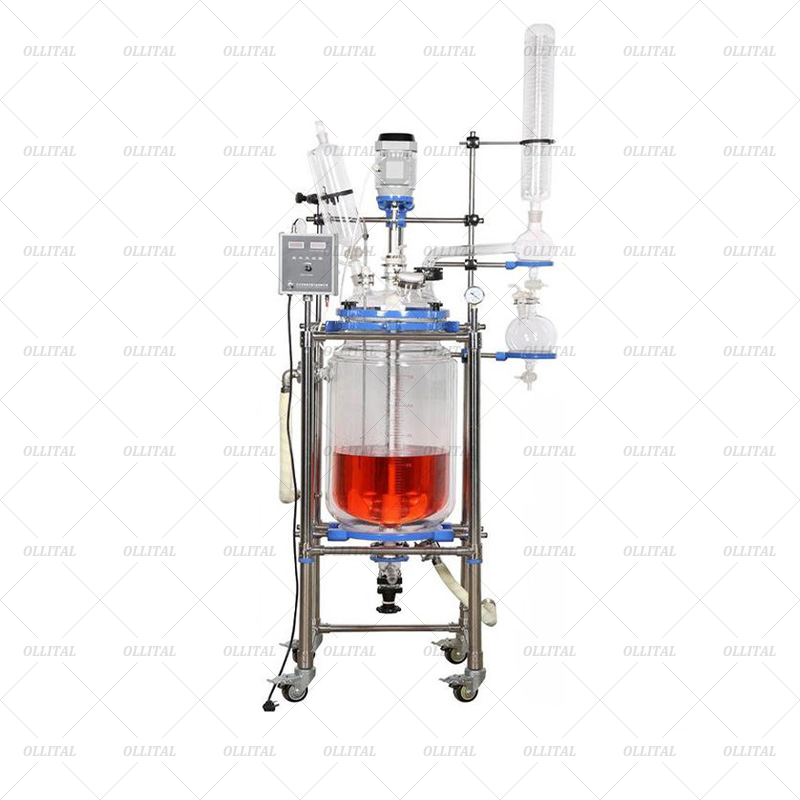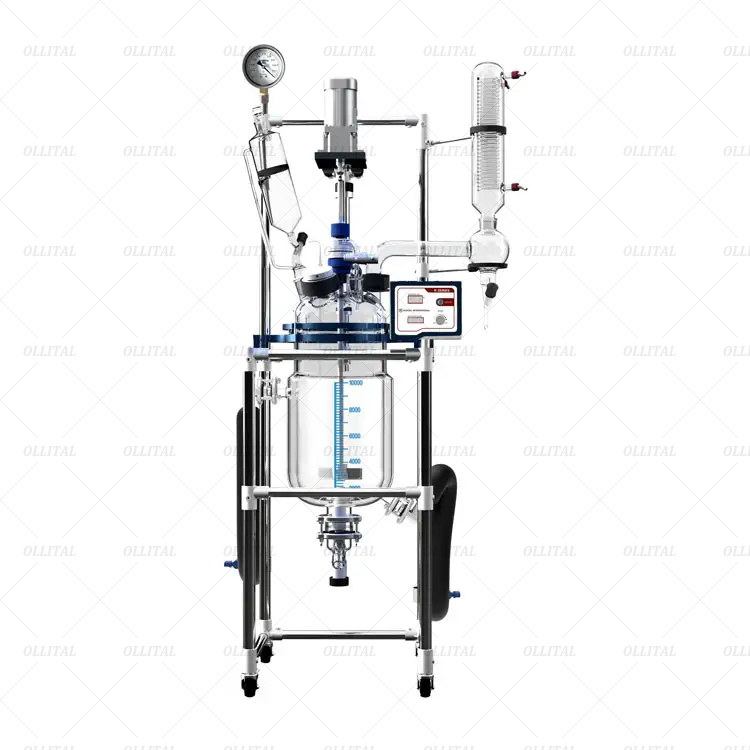A jacketed glass reactor is a device used for chemical reactions. It is made of high borosilicate glass and has a jacket structure on the outside, which is used to heat or cool the reactants in the reactor through a heat exchange medium (such as water, oil or steam). It has excellent chemical stability, high temperature resistance and transparency, making it widely used in laboratories and small-scale production. The design of the jacketed glass reactor allows users to accurately control the reaction temperature, observe the reaction process, and evenly mix the reactants through a stirrer to improve the reaction efficiency and effect.
Basic structure
The jacketed glass reactor is mainly composed of the following parts:
-
The reactor body: made of high borosilicate glass, which is resistant to high temperature, corrosion and chemical stability. The transparent design makes it easy to observe the internal reaction.
-
The jacket: heating or cooling through the heat exchange medium (such as water, oil) in the jacket to achieve precise temperature control
-
Agitator: installed in the reactor body, used to mix the reactants, common types include paddle type, frame type, spiral type, etc.
-
Temperature control system: including temperature sensors and controllers, used to monitor and adjust the temperature in the reactor.
-
Inlet and outlet: used to add reactants and discharge products, usually designed with multiple calibers and positions for different operation requirements.
-
Condenser: installed on the upper part of the reactor, used to condense the evaporated solvent and gas to avoid loss and pollution.
-
Sealing device: ensure the sealing inside the reactor to prevent leakage of reactants and external pollution.
Main application areas of jacketed glass reactor:
1. Chemical industry
-
Organic synthesis: used for various organic chemical reactions, such as esterification, acylation, hydrogenation, halogenation, etc., to facilitate precise control of reaction conditions.
-
Inorganic synthesis: used for the synthesis and crystallization of inorganic compounds, such as the preparation of salts, oxides, etc.
2. Pharmaceutical industry
-
Drug development: used for the synthesis, purification and separation processes in the development of new drugs.
-
Intermediate synthesis: used for the synthesis of drug intermediates, which is convenient for controlling the temperature and pressure during the reaction process.
-
Crystallization and precipitation: used for the crystallization and precipitation process of drugs to ensure the purity and quality of drugs.
3. Materials science
-
Polymer synthesis: used for the synthesis of various polymer materials, such as plastics, rubbers, resins, etc.
-
Nanomaterial preparation: used for the synthesis and research of nanomaterials, and the transparent kettle body is convenient for observing and controlling the reaction process.
-
Composite material development: used for the preparation and research of composite materials to ensure the uniform mixing and reaction of different materials.
4. Food science
-
Food additive synthesis: used for the development and production of food additives, such as sweeteners, preservatives, spices, etc.
-
Fermentation and enzyme reaction: used for food fermentation processes and enzyme-catalyzed reactions to ensure the stability and controllability of reaction conditions.
5. Biotechnology
-
Cell culture: used for cell culture and biological reaction processes, and the transparent structure is convenient for observing cell growth and reaction conditions.
-
Enzyme reaction: used for enzyme catalytic reaction and enzyme production, accurately controlling temperature and pH value, and improving reaction efficiency.
-
Genetic engineering: used for reaction and separation steps in genetic engineering process, such as gene cloning and expression.
6. Teaching and scientific research
-
Experimental teaching: used for experimental teaching in colleges and research institutions to help students understand and master the principles and operation skills of chemical reactions.
-
Scientific research experiments: used for various scientific research experiments, facilitating accurate control of experimental conditions and data recording.
In summary, jacketed glass reactors have been widely used in scientific research, teaching and small-scale production due to their excellent material properties, precise temperature control, good stirring effect and safety. In addition to the above advantages, compared with reactors made of other materials (such as stainless steel and titanium), glass reactors are less expensive and are particularly suitable for use in laboratories and small-scale production. The chemical corrosion resistance and high temperature resistance of high borosilicate glass give it a long service life, reducing the frequency and cost of replacement, making it a very good laboratory equipment.







 +86 15960821529
+86 15960821529 kevin@ollital.com
kevin@ollital.com kevinollital@gmail.com
kevinollital@gmail.com +86 15960821529
+86 15960821529 +8615960821529
+8615960821529